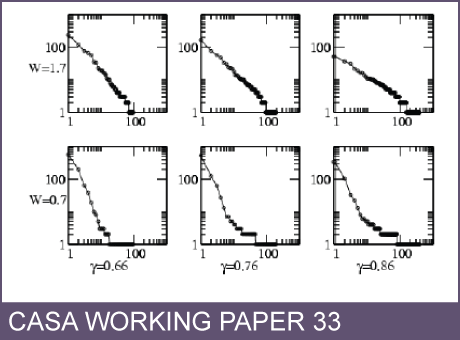CASA Working Paper 33

1 July 2001
Agents with dycotomic goals which generate a rank-size distribution
Many explanations have been proposed for the rank-size rule or power law in city size distribution based on a probabilistic process. These explanations are usually opposed to that proposed by Zipf who explained the rank-size rule as the result of the application of the principle of least effort. In his opinion, by using this principle, it is possible to find an equilibrium between the two opposite forces of diversification and of unification. In fact, because the main components of the system are resources, people and products, the first force brings people near to resources, and the latter brings products near to people. Even these notions are simple, and are accepted in the spatial economic field it is not clear how a rank-size rule can be derived from it.
In this paper I will show how a rank-size distribution can be generated by using multiagent interaction which uses a probabilistic law to obtain opposing goals that correspond to unification and diversification forces. This paper is divided in two sections: the first section presents a model based on agents pursuing opposite goals; the second discusses the model in relation to the previously proposed models.
This working paper is available as a PDF. The file size is 179KB.
Authors: Ferdinando Semboloni
Publication Date: 1/7/2001
 Close
Close

